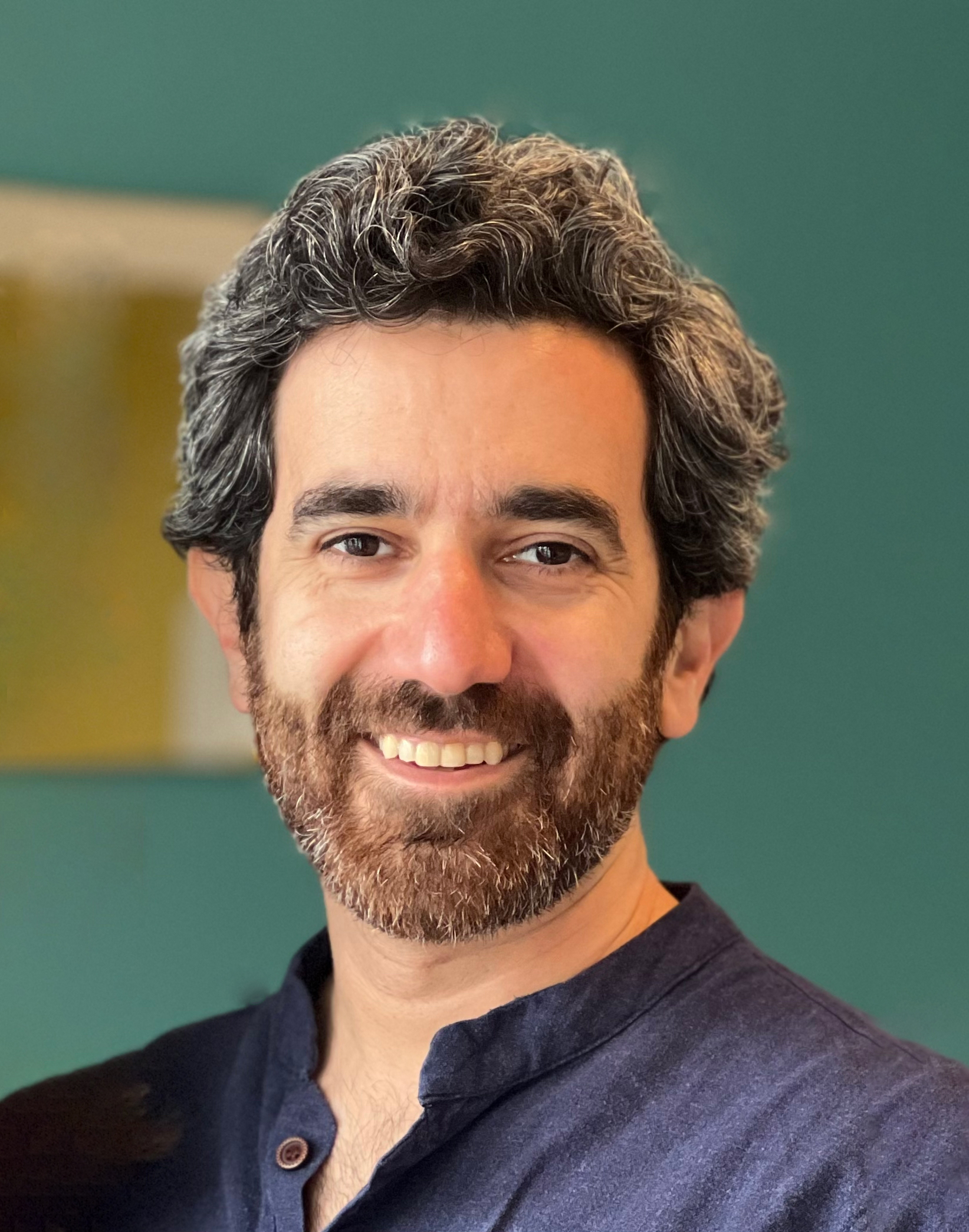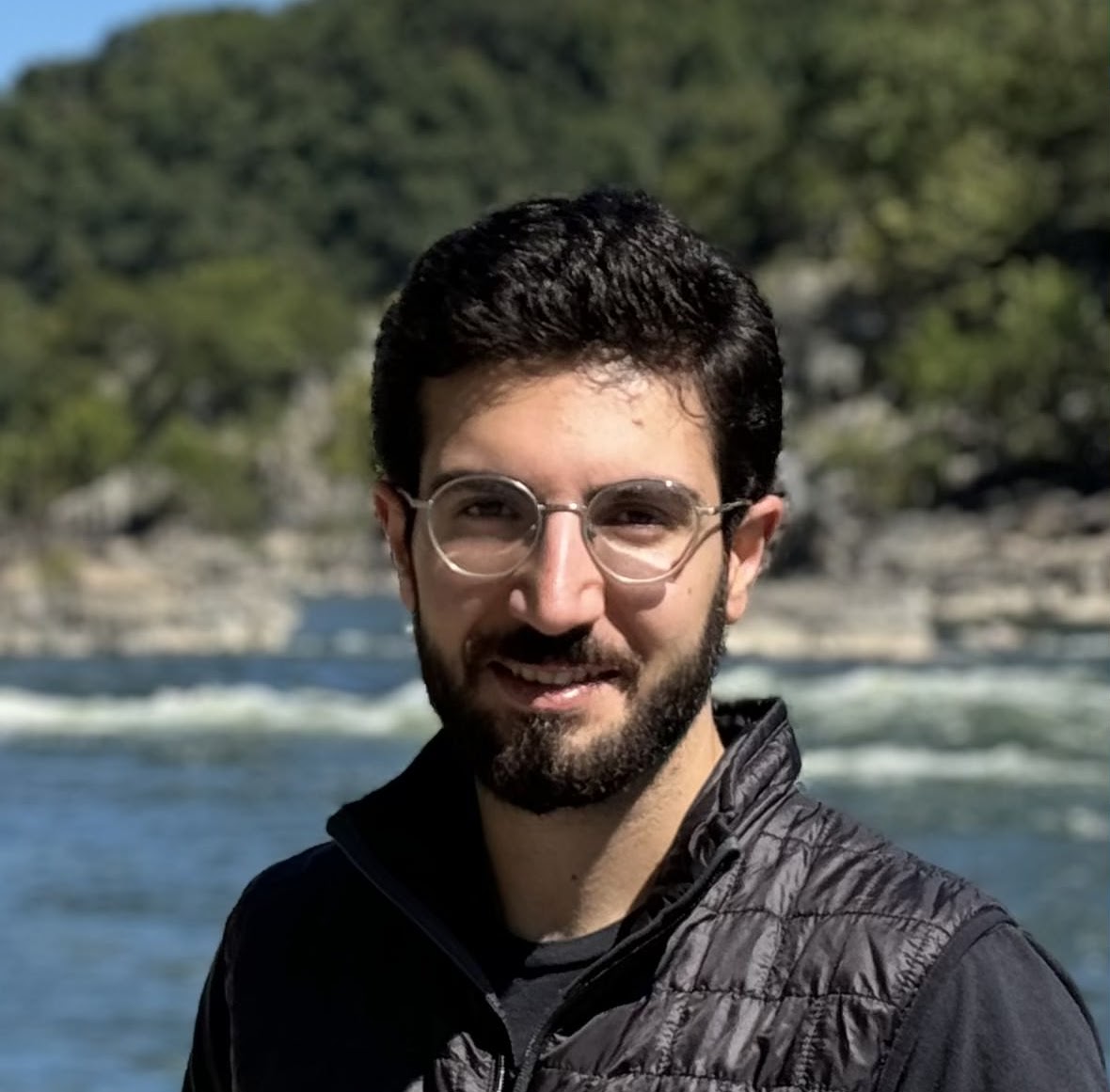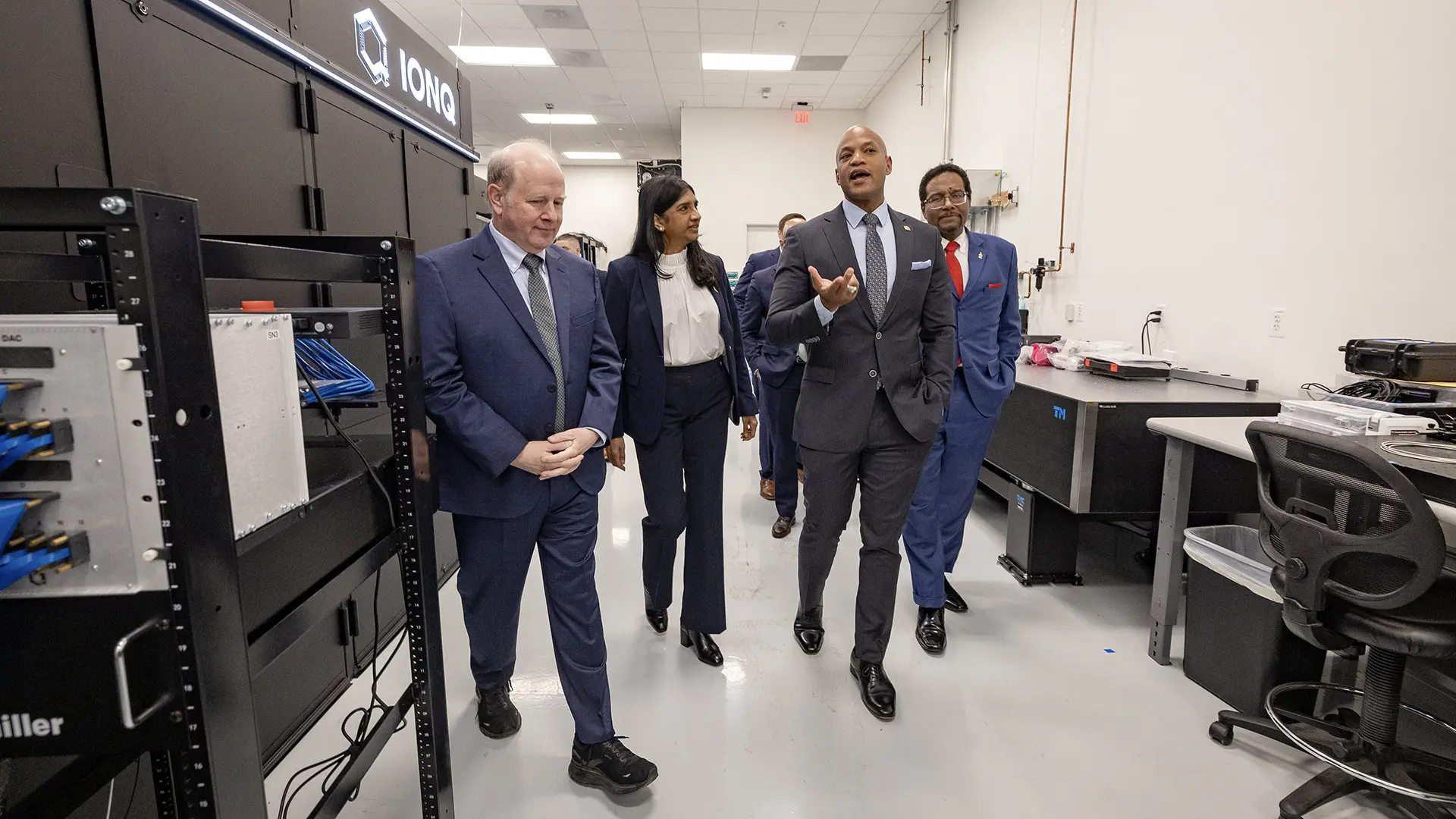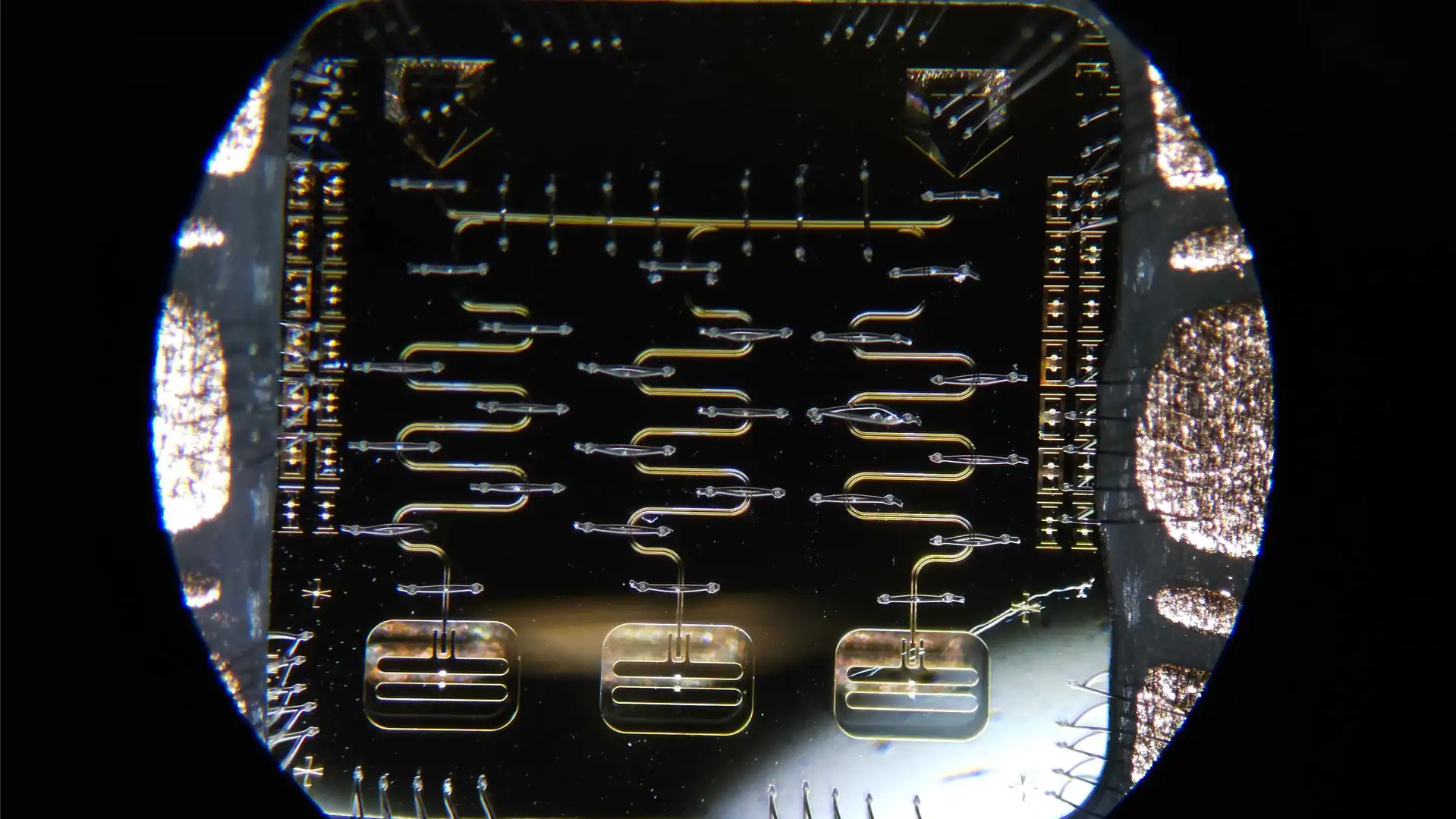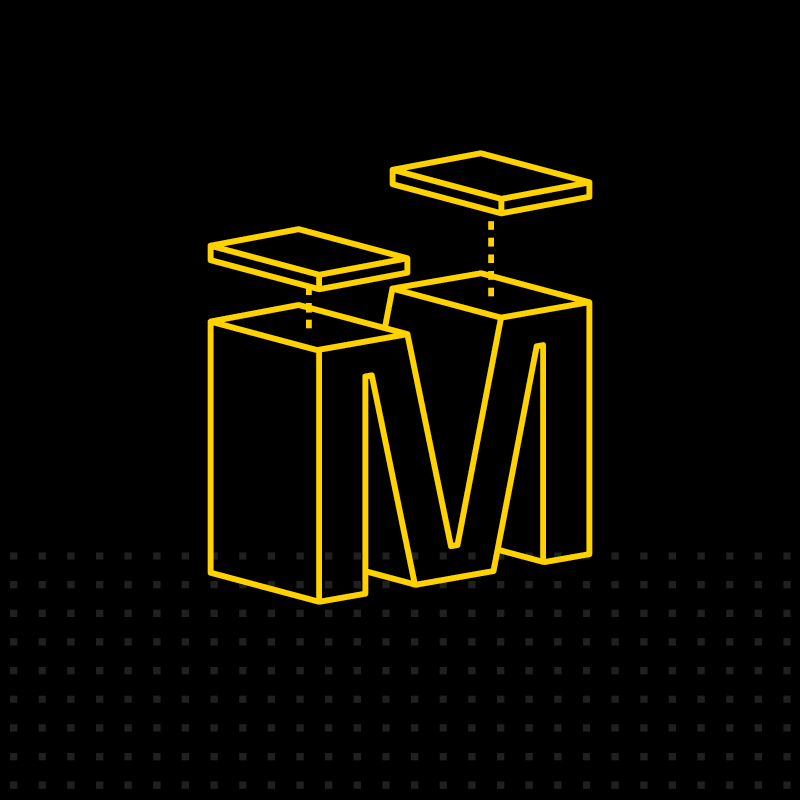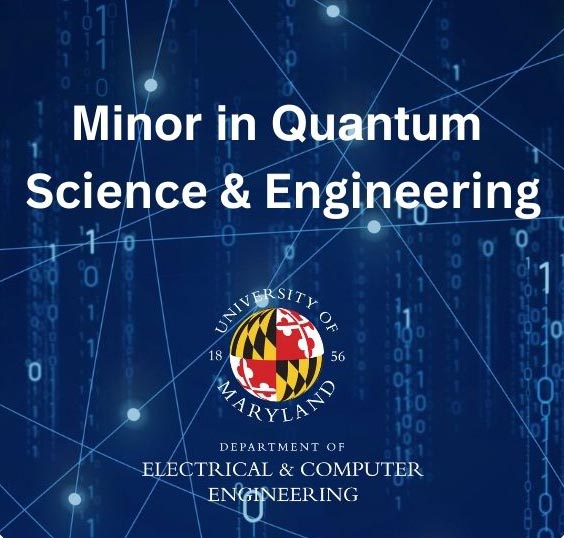News Story
From MRIs to the QTC
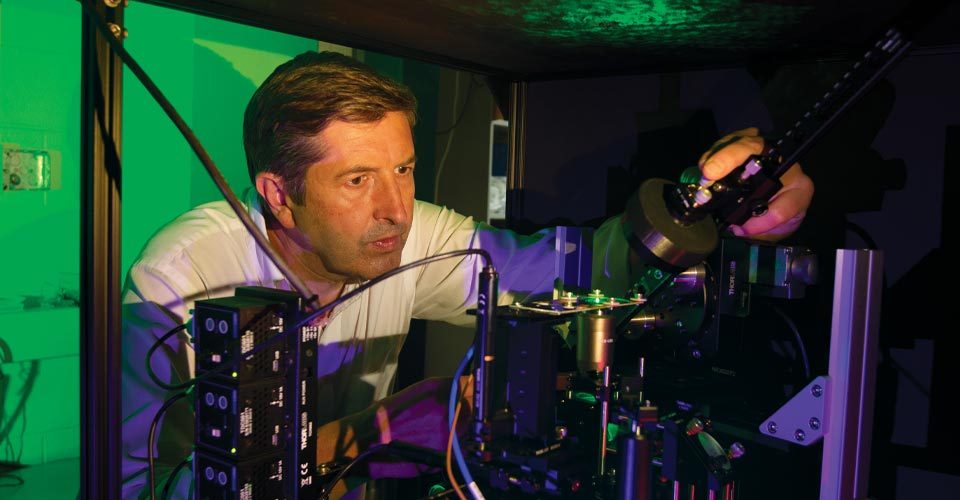
Professor Ron Walsworth in Quantum Technology Lab
By Chris Carroll
Photo by John T. Consoli
Dipping a toe into quantum science often creates a “this is your brain in a blender” effect on the uninitiated, but University of Maryland scientist Ron Walsworth is quick to point out that Hyperfine, a company he co-founded and that joined the NASDAQ exchange last fall, arises from a kinder, gentler variety—he calls it “20th-century quantum.”
This earlier understanding of the nature of space and time and the building blocks of matter informed Walsworth’s long-ago research at Harvard involving hyperpolarized gas imaging. He conducted the work alongside his former postdoc and later colleague and fellow Hyperfine co-founder Matt Rosen, now a Harvard School of Medicine professor. It eventually led to the company that builds small, low-cost magnetic resonance imaging (MRI) machines that operate at a low magnetic field—and thus can be wheeled into action in emergency rooms, intensive care units and other settings where expense, size or magnetic interactions with other medical equipment rule out full-size MRI machines.
“The quality of its images isn’t quite as good as a giant, multimillion-dollar MRI in a hospital, but that’s an acceptable tradeoff in many circumstances,” says Walsworth, director of UMD’s Quantum Technology Center (QTC) and a professor of electrical and computer engineering and of physics.
Hyperfine’s low-field machines are already expanding health care access in the developing world; for instance, in a remote area of Malawi, after unpacking the machine and getting online instruction, doctors were able to quickly diagnose a child’s serious illness and refer her to proper medical care. Walsworth, no longer directly involved in the company, still gets emotional talking about how the machine helped the youngster.
His determination to make medical imaging more accessible stems from his young son’s 2006 diagnosis with a brain tumor, which plunged the family into the world of childhood disease.
“We slept in the pediatric intensive-care unit for a couple of weeks,” he says. “I realized maybe I could help make things better for these children and parents and the incredibly dedicated doctors and nurses.”
His son recovered, and with Rosen leading the development of the technology for brain imaging, Hyperfine launched in 2014, with scientist and entrepreneur Jonathan Rothberg as the third co-founder.
“Ron and I are so proud of the trajectory of our combined academic effort,” Rosen says. “First it was him, and then me, just grinding away to get funding and improve the technology—NASA, NSF—it felt like pushing a rock uphill endlessly. And then finally, people understood what we were doing.”
In Walsworth’s current work on quantum sensors, communication networks and more in the QTC, he focuses on the full-bore, mind-bending “21st-century quantum” that directly exploits confounding concepts like “entanglement.” But regardless of the century it arises from, he says, the idea is to create a better world.
Published August 26, 2022
